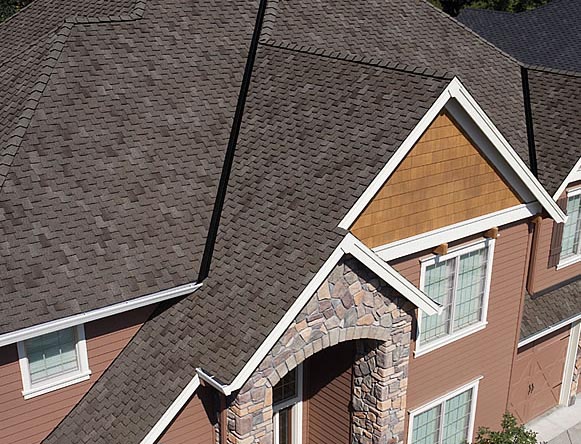Local Insights on Roofing Companies Gainesville Florida Homeowners Prefer
Local Insights on Roofing Companies Gainesville Florida Homeowners Prefer
Blog Article
Ideal Practices for Ensuring Appropriate Roofing Ventilation
A balanced intake and exhaust vent ratio, generally 1:300, plays an essential role, with intake vents ideally positioned at the lower edge of the roof for great air entrance and exhaust vents at the peak for cozy air leave. Maintaining insulation away from vents is vital to avoid airflow limitation.
Understand Ventilation Basics
Effectively recognizing ventilation fundamentals is essential for making sure the durability and effectiveness of roof. Efficient air flow reduces wetness accumulation and temperature extremes in the attic room, both of which can result in significant architectural damages gradually. A well-ventilated roofing system helps in avoiding usual concerns such as mold and mildew growth, wood rot, and ice dams, which can jeopardize the integrity of the roof covering materials and the underlying structures.
The main objective of ventilation is to promote the motion of air, enabling a consistent exchange in between the outside and indoor environments. This balance is attained through a combination of consumption and exhaust vents that interact to preserve ideal air flow. Intake vents, usually situated along the eaves or soffits, permit fresh air to get in the attic space, while exhaust vents, frequently positioned at or near the roof ridge, make it possible for warm, moist air to leave.
Trick elements affecting the performance of roofing system ventilation consist of appropriate positioning, ample sizing, and guaranteeing that both intake and exhaust vents are unhampered. Routine inspection and upkeep are vital to recognize prospective blockages, damages, or inefficiencies in the air flow system, therefore protecting the roof's efficiency and longevity.
Sorts Of Roof Covering Vents
Roof vents play a critical duty in preserving efficient attic ventilation and, by expansion, the general health and wellness of the roofing system. Different types of roof vents are readily available, each with distinct advantages customized to particular roofing demands.

Soffit vents are installed under the eaves and work in tandem with roofing vents to ensure a well balanced intake and exhaust system. By enabling cooler air to get in from below, soffit vents help with the expulsion of warm air through top vents. Gable vents, located on the outside walls of the attic, deal an additional efficient service, specifically in homes with saddleback roofs.
Examine Your Present Air Flow

Following, think about the age and condition of your roofing products and air flow components. Older systems may not abide with present building ordinance or might have worn away in time, reducing their effectiveness. Conduct a comprehensive evaluation to determine any indications of deterioration, such as corrosion, damages, or gaps that could jeopardize the system's efficiency.
Furthermore, gauge the attic room temperature level and moisture levels. High temperatures and moisture can show inadequate air flow - roofing companies gainesville florida. Utilize a hygrometer and thermometer to get accurate analyses, comparing them with exterior conditions. Consistent disparities suggest prospective problems that require attending to.
Installation Best Practices
Efficient setup of roof covering ventilation systems is vital for making certain optimal performance and longevity. Appropriate setup starts with recognizing the details ventilation needs of the roofing and the building it covers. This includes calculating the appropriate ratio of intake to wear down vents, usually sticking to the 1:300 policy, which specifies one square foot of ventilation for each 300 square feet of attic floor area.

Intake vents should be set up at the roof's lower side, often in the soffits, to allow great air to enter. Exhaust vents, on the other hand, need to be installed near or at the roofing's optimal to facilitate the leave of warm, damp air.
Seal all air vent links meticulously to avoid air leakages and potential water seepage. Usage premium products and follow supplier standards to ensure toughness and efficiency. Additionally, integrating ridge vents with baffles can substantially enhance air movement efficiency by avoiding wind-driven rain and snow from going into the attic room.
Inevitably, precise installation of roof covering ventilation systems reduces prospective problems such as mold development, ice dams, and structural damage, making certain the roofing system's stability and the building's general health.
Routine Maintenance Tips
Uniformity in upkeep practices is fundamental to ensuring the long-term performance of roofing ventilation systems. Normal examinations are crucial, ideally performed biannually-- in the springtime and fall. Throughout these evaluations, guarantee that vents are without debris, nests, and various other obstructions that could hamper air movement. Look for any kind of signs of dampness build-up or mold, as these can suggest incorrect why not check here ventilation or leakages (roofing companies gainesville florida).
Cleansing the vents is another necessary job. Utilize a soft brush or a vacuum cleaner to eliminate dirt and particles from intake and exhaust vents. Be careful not to damage the air vent screens or louvers throughout the process. Additionally, inspect the attic area for any indicators of water damage, which could jeopardize the honesty of the roof.
Correct insulation is equally important. Guarantee that attic check my reference room insulation does not obstruct the vents, as this can drastically restrict air flow. Reposition or replace it to maintain an efficient obstacle. if any type of insulation has actually shifted or cleared up.
Finally, change any kind of harmed or missing out on elements without delay. Busted vents, cracked shingles, or deteriorated flashing can all add to insufficient ventilation and must be attended to without delay. Normal upkeep makes certain that the roofing ventilation system operates ideally, therefore expanding the life-span of the roofing itself.
Conclusion
Ensuring correct roof covering air flow is vital for maintaining the efficiency and resilience of a roof. Adherence to the 1:300 consumption and exhaust air vent ratio, coupled with the critical placement of vents, is essential. Normal biannual assessments, debris cleansing, and making sure insulation does not obstruct air flow are vital practices. Applying these finest methods will cultivate a well-ventilated roof system, thus alleviating potential concerns associated with moisture accumulation and too much heat, inevitably prolonging the roofing's life-span.
A well balanced intake and exhaust vent proportion, generally 1:300, plays original site a critical function, with intake vents ideally positioned at the lower edge of the roof covering for amazing air entrance and exhaust vents at the peak for cozy air exit. Intake vents, normally situated along the eaves or soffits, enable fresh air to get in the attic room area, while exhaust vents, usually situated at or near the roofing system ridge, make it possible for hot, moist air to run away.
Soffit vents are installed under the eaves and job in tandem with roofing system vents to make sure a well balanced intake and exhaust system. By permitting cooler air to get in from below, soffit vents facilitate the expulsion of hot air via top vents. Adherence to the 1:300 consumption and exhaust vent ratio, paired with the critical placement of vents, is important.
Report this page